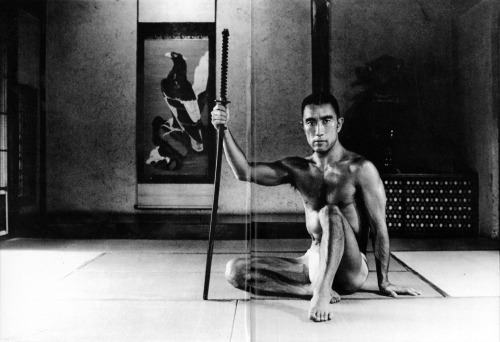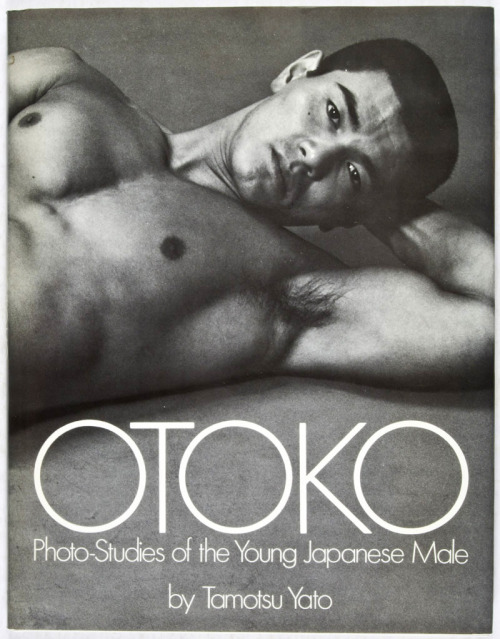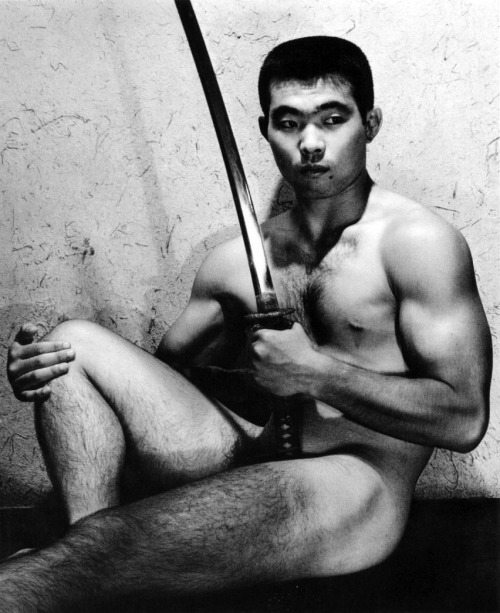 |
| Tamotsu Yato via Pow! |
Ich bin neulich durch einen Freund auf einen Teil der japanischen Manga Kultur aufmerksam geworden, der mir vorher weitestgehend unbekannt war. Nicht dass schwule Mangas nicht vorstellbar wären, aber dezidiert in die Mainstreamkultur reichen sie wohl noch nicht. Und genau diese Mehrheitskultur hat hat ja Tendenz Ländergrenzen zu überschreiten. Selbst die amerikanischen Comics mit den bärtigen Polizisten und Ledertypen, sind hier leider viel zu selten zu sehen. Neulich bin ich dann hier rüber gestolpert. Und aus dem übernommenen Text, ergeben sich die Parallelen. (Sadao Hasegawa) Ich muss also gar nichts weiter schreiben :-)
Photographs from Otoko: Photo-Studies of the Young Japanese Male, 1972
by Tamotsu Yato (矢頭保)In its 85 photographs, Otoko pushed the boundaries of public decency, established a new vocabulary for homoerotic art, and presented Japanese manhood in a way it had never quite been pictured before. Richard Hawkins has written a fascinating, detailed history of Tamotsu Yato’s life, where he characterizes Otoko as “almost legendary” and “quite formative for gay Japanese men of certain age.”Before Yato started making waves as a photographer, he played bit parts in Nikkatsu Studio films, typecast as a gangster or a “streetwise tough.” These were the same type of rough-edged macho characters he was drawn to as a photographer. Yato found his subjects, many of them heterosexual, by approaching men on the street with his business card and asking, “Would you like to be my model?”Yato’s career in photography began in 1967 with the publication of Young Samurai: Bodybuilders of Japan, an unprecedented ode to muscled Japanese men which boasted a glowing introduction from the novelist Yukio Mishima. Mishima was a close friend and mentor to Yato. He wrote introductions to Yato’s books, inspired Yato’s aesthetic and appeared as a model throughout Yato’s work. The photographer and the author found a lot of common ground, sharing a love for masculinity and a mutual nostalgia for the the Japanese past, rife with all-male environments and romantic notions of honor, violence, and loyalty. In Otoko, Yato uses traditional Japanese symbols to root male-male desire within a historical context. Hawkins sums it up succinctly:Yato’s careful inclusion of historical props (swords, helmets, fans, Meiji-era furnishings) is overtly intended toward homosexualizing Japanese history and historicizing Japanese homosexuality.Just before Otoko’s originally intended release date in 1970, Yukio Mishima famously acted out ritual suicide (seppuku) in the midst of an attempted coup d’état. Yato dedicated Otoko to the memory of his departed friend. Without a major publisher or art gallery backing him up, Yato took an nontraditional approach to distributing the book. From Hawkins:When Otoko was published in 1972, Yato brought copies of the book around to Shinjuku and offered it for sale in the increasing number of gay bars that Tokyo offered at this time. It was apparently for sale behind the counter at at least one bar, Paru (a bar which, as an aside, Roland Barthes frequented on his several trips to Tokyo in the late 60s). Yato charged two prices for the book; 1,500 yen for those who could afford it and 300 yen for students.Yato passed away suddenly in 1973 of an enlarged heart. Otoko went on to become a cult phenomenon and profoundly impacted a generation of gay erotic artists, including the hugely influential Sadao Hasegawa. In his 1996 book Paradise Visions, Hasegawa explained the cultural significance of Otoko:Tamotsu Yato achieved fame by creating Otoko, a picture book. He photographed Yukio Mishima, nude. His subjects: traditional, muscular, unsophisticated countryside men, are mostly extinct today. Otoko was valuable because you could see these long-bodied, stout-legged, cropped hair, square-jawed men… Good-bye, men of Nippon!Gengoroh Tagame acknowledges the importance of Yato’s work in the introduction to his book Gay Erotic Art in Japan vol. 1, crediting Yato and photographer Haga Kuro with shaping the erotic aesthetic of a generation. He also laments the photographer’s fading legacy:As for Yato Tamotsu, the existence of the artist is nearly forgotten, and original negatives are spread and gone, there is no movement to evaluate him once again. This is very unfortunate not only for gay erotic art, but also for the history of Japanese photography. His work is highly artistic and timeless.



1 Kommentar:
It's actually a great and helpful piece of information. I am satisfied that you shared this helpful information with us.
Please stay us informed like this. Thank you for sharing.We at Propertyhunters. this is our service web site. please visit our web site.
Thank you.Apartments for sale in Doha Qatar
Kommentar veröffentlichen